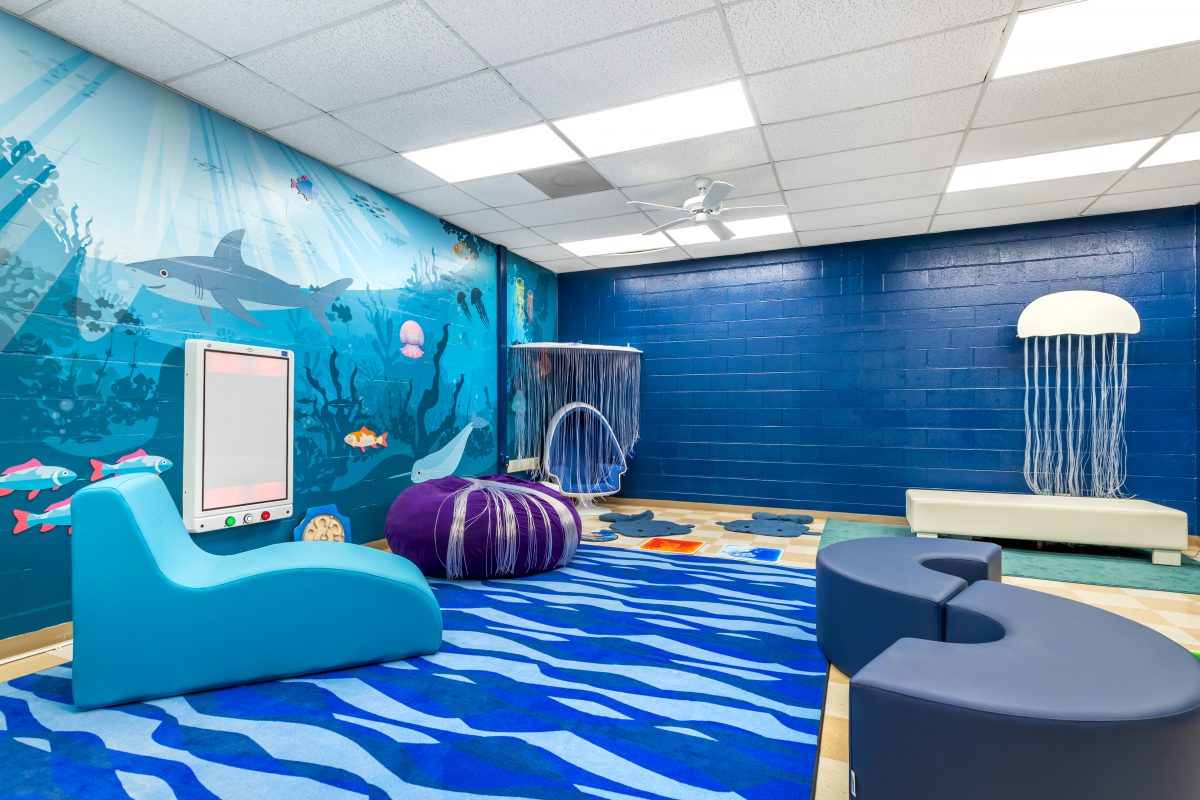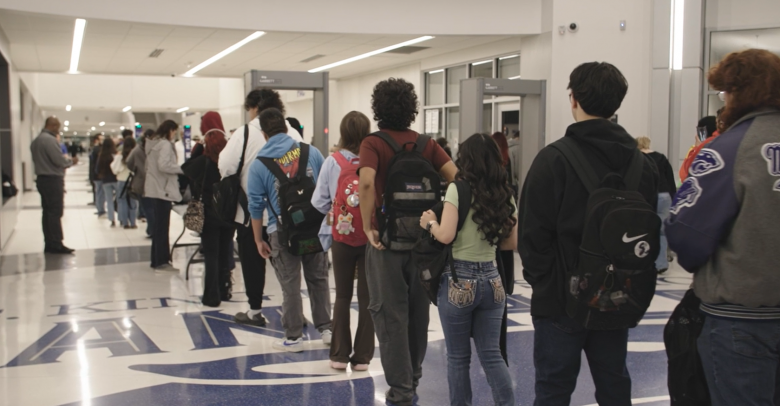Multisensory Room has a big impact on student wellness and behavior.
A new, state-of-the-art sensory room within the United Independent School District in Texas has proven to be so successful at calming students, de-escalating disruptive behavior, and getting students ready to learn that district officials plan to replicate the idea in every building.
“We’re looking to do what’s best for our students,” says Executive Director of Special Education Laura De Los Santos.
The room includes a vibro-acoustic lounge chair that vibrates to the sound of calming music, helping students to relax. It also includes a number of sensory experiences that help students assert control over their environment.

Designed, furnished, and equipped by School Specialty® at the district’s request, the room promotes self-regulation skills and supports students’ mental and emotional wellbeing.
The sensory room, which was finished and opened to students in September 2024, was originally intended to serve adult students at a transitional school. However, students from an adjoining middle school also regularly use this calming space—and teachers say it’s having a transformational effect on their behavior and their ability to focus.

Promoting Coping Strategies
The room is located at the United ISD Cherish Center, a 21,000 square-foot facility serving special needs students from the district’s four high schools. The Cherish Center is a transitional school for students who have enough academic credits to graduate, but who could benefit from additional skills training before they’re ready to leave school and become productive members of society.
At the Cherish Center, students learn and practice skills that will make them employable, such as serving customers or washing dishes. The center serves about 100 students up to age 21.
The Cherish Center is adjacent to a large middle school serving 1,200 students, and it doesn’t have its own library or cafeteria. Instead, students from the Cherish Center use the middle school’s library and cafeteria. However, this busy and noisy environment can be overwhelming for some of the center’s students, which can lead to outbursts or panic attacks.
“They need to de-escalate their behavior sometimes,” De Los Santos says. “They need strategies to help them cope.”
Inspired by a sensory room with a tranquil, “Under the Sea” theme at a local community center, the district turned to School Specialty for help in creating a similar space at the Cherish Center.

Reducing Anxiety While Also Delighting Users
With licensed counselors and occupational therapists on staff, School Specialty has extensive expertise in designing calming sensory spaces that meet a variety of student needs based on proven research.
School Specialty Learning Environment Specialist Silvia Martinez and Senior Interior Designer Monique Stephenson worked with De Los Santos and her team to come up with a design that met their requirements. The multi-sensory environments are relaxing spaces that help reduce anxiety yet also engage and delight users.
The room features dim lighting, an “Under the Sea” décor, and numerous sensory objects for calming and fascinating students.

For instance, a “sound shell” chair equipped with a Bluetooth-enabled MP3 player provides a cozy retreat for students to sit in full silence or while listening to calming music. A vibro-acoustic lounger also calms students as they feel the vibrations from the music. Florescent bubble tubes offer not only visual stimulation but also audial and tactile stimulation through the gentle vibrations caused by the tube’s internal pump. Weighted blankets and tactile sensory panels provide further sensory stimulation.
One of the hallmarks of a multi-sensory environment is the use of sensory inputs designed to promote choice and independence. The sensory room at Cherish Center contains sensory floor tiles that create liquid patterns when students step on them, as well as LED furniture cubes.


Students Are Already Benefiting
The Cherish Center sensory room has only been open for a few weeks, and already the district
has noticed a big impact. Not only does it help students de-escalate problematic behavior, but it also helps them relax and prepare to learn.
“It’s helping us in many ways,” De Los Santos says. “The dim lighting helps calm students. They also like the reclining chairs, the weighted blankets, and touching the various elements.”

Teachers and occupational therapists from the adjacent middle school have begun bringing their special-needs students to the sensory room as well. “I have three students who use the room every day as part of their daily routine,” De Los Santos says. “Their teachers say that after these students have spent time in the sensory room, the school day goes a lot smoother for them.”

Having a separate room that students can go to when they need to calm down or overcome anxiety makes a big difference in their learning, De Los Santos says. She’s so happy with the results that she has received permission from the district to create a similar sensory room in every school, starting with the district’s 30 elementary schools.
Working with School Specialty to design and create the space has been a great experience, she concludes, noting: “They were very knowledgeable about what to include.”






Leave a Reply